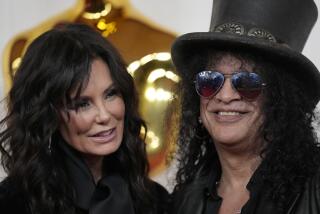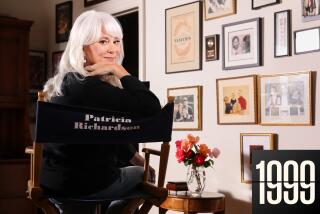An American Original
American critical writing concerned with the performing and plastic arts--discursive texts frequently produced as journalism in this country between, say, 1925 and 1965--is among the best literature of its kind to be found the world over. The art chronicles of Henry McBride, the music criticism of Virgil Thomson, the dramatic theory and theater reportage of Stark Young and the dance writings of Edwin Denby are preeminent here, though I would cite affinitive work by Paul Goodman, Marsden Hartley, Lincoln Kirstein, Carl Van Vechten, Glenway Wescott and Thornton Wilder. It will be noted that these writers (all homosexuals) were generally engaged in creating works of art: Only latterly did they acknowledge the scope and force of the critical work they initially tended to regard as a catalytic byproduct. Virgil Thomson is exceptional among them in that he was secure in the roles of writer, critic, commentator and polemicist before he even started his career as a composer.
Anthony Tommasini has subtitled his fine biography to suggest the tensions this situation afforded one of the most colorful masters of American criticism, and he is as enterprising in his scrutiny of the politics of Thomson’s critical performance as he is responsive to his (merely) musical achievement. Much discernment is required, for Thomson closely superintended a biography of himself--by John Cage no less!--when he was 65, wrote an autobiography when he was 70 and allowed a selection of his letters to be published when he was 90; these books inveterately seek to wrest the formulas of recollection into a self-serving paradigm of benign mastery. The wit and charm of such pseudo-personal marginalia are likely to blunt the trenchant quality of Thomson’s strictly musical criticism, and (as Tommasini frequently has occasion to show) they distort the gestures of his life beyond, so to speak, recognition.
Thomson’s childhood in turn-of-the-century Kansas City, his education in a provincial Baptist milieu and his permanent emotional captivity within what we nowadays would regard as a severe and severely repressive family circle are deeply mined by his heedful biographer to reveal how clearly, by the time he entered elementary school, Thomson had hardened his shell and sharpened his beak:
“He was bookish, clever, short, homely and preoccupied with secret longings that he felt acutely but couldn’t identify. He would never be able to compete with the playground bullies. He would have to become, instead, an intellectual bully. . . . Whatever Virgil Thomson wanted--a romantic conquest, the friendship of a popular Harvard classmate, the praise of teachers, the support of patrons, the loyalty of performers, a powerful platform for his views--he would have to get through his brilliance, his incontrovertible arguments, his beguiling charm, and his cutting wit. He learned the tactic early on.”
It is remarkable how late (for a musician) Thomson’s self-identification as a composer set in. As Tommasini explains, all through his adolescence and young adulthood, the one musical activity Virgil Thomson did not pursue was composing. This he would not take up until 1920 at Harvard, when he was 24 and had achieved a surprising degree of self-awareness: “It takes a good deal to get down to my sentimental skin, through all the callous layers of my deliberate and temperamental egotism.” We shall not be surprised, then, that the best of his music, written in the next half century, is allotropic, depicting people, places and experiences outside of himself. He would be in his element, Tommasini observes, composing vocal works, theater music and film scores, landscapes and portraits. Musical portraits, indeed, became the characteristic gesture of his creative impulse: “Practicing my spontaneities--making portraits of people was beginning to serve me, as it had long served Gertrude, as an exercise not only in objectivity but in avoiding the premeditated.”
As this sentence indicates, Thomson found more than a collaborator in Gertrude Stein. He was able to learn from her, as so many American composers had learned from Nadia Boulanger (another male-oriented autonomous woman in Paris whose sexual orientation was not threatening to him), how to exercise his talents to the maximum. It is dismaying to realize, consequently, that the friendship with neither woman went deep enough to penetrate beyond intermediate layers of that “callous and temperamental egotism” of his. Boulanger was 34 when Thomson first studied with her, and already teaching counterpoint, harmony and analysis to Aaron Copland. It did not take her new student long to “debunk the Boulanger cult: her tastes are sentimental. . . Her lack of comprehension of everything is complete.” Thomson’s disenchantment, Tommasini suggests, may have been affected by Boulanger’s advocacy of Copland. In any case, he broke off his lessons “and she never forgave me.” The relation with his compatriot Stein was of course much deeper but was never without tension. It ran aground just before he finished his first opera on her text of “Four Saints in Three Acts,” when Miss Stein “declined further acquaintance with Mr. Thomson.” Though patched up later, the friendship was agonized, and Thomson appears to have regretted Stein’s death chiefly as the cessation of a possible source of further librettos; whatever his attachment to Stein and Alice B. Toklas, it seemed to fray out under stress. Again, Tommasini is perceptive: “After their acrimonious breakup and tortured reconciliation, Virgil avoided delving into Gertrude’s personal affairs, thinking it safer; but clearly he felt guilty for having missed the signs of her illness.”
*
After an oddly agreeable experience of military service in World War I, after a series of rebuffs from Harvard’s official musical world, Thomson would settle in Paris as a composer living on his wits for 15 years, obtaining proper patrons and the affections of one or two loving companions, most significantly Maurice Grosser, who made scenarios out of both Stein texts that would become, in the eyes and ears of the musical public, the works that sent Virgil into high gear. Neither creation had anything to do with France--indeed, the second opera score was completed (in about three months) in New York--but Virgil Thomson’s life in Paris, from the very start, was determined by that Gallic train de vie which was to become something of a mystique: “I had not yet begun on the French classics, nor had I set foot in the Louvre, but I felt at home with France, its music, its food, its people, its reading and writing.” Indeed, his post-World War II decades of Manhattan life at the Chelsea Hotel, where his apartment became legendary as the site of succulent and diverting repasts, reproduced in meticulous detail the quality of his routine as a Parisian petit-maitre. Much of the effort, and its rewards, concerned the manipulation of power in the musical world. By the time Thomson had left Paris to the Germans in 1939 and taken up his residence in New York once again, he had become not only a petit-maitre but a past master; here Tommasini quotes Lincoln Kirstein’s diary most revealingly: “No one has understood the politics of lyric theater as well as Virgil Thomson. His intelligence is analytical, surgical, cheerful, realistic; it is optimistic in spite of an unsentimental manner which is the passionate reverse of enthusiastic. He showed me many ways to do what I wanted.” I find that last sentence a little chilling, but it is not Kirstein who spreads the frost. Yet it must be granted that Thomson was an animator for others besides himself--it was he who got Edwin Denby his job as a dance critic, with the same perception of suitability as when he remarked, in his late 80s as he traveled from college to college picking up honors and getting his works performed, “almost anything I choose to do at my age is deductible.”
The recounted tribulations of a terrified sexual retard with the figure (and the manners) of a saurian baby, the settling of scores (of all kinds) in the columns of the Herald Tribune, as well as over that tyrannical dinner table, do not keep us from discerning that the last 30 years of his life (Thomson made a lot of money on the stock market and left an estate, after all his possessions were sold for the benefit of the Virgil Thomson Foundation, of nearly $3 million when he died in 1989) were ones of uncommon advantages, shadowed by bad character. As Allan Stinson, one of the faithful and inevitably disaffected secretaries, put it: “It is just brattish whining to feel the world owed him more attention than he got. I do, however, have some sympathy for his music, especially the operas. They are child actresses who can’t get work because no one wants to put up with their stage mother.” Anthony Tommasini’s closely detailed study of this entertaining autocrat will come to many--it did to me--as a frequently disagreeable narrative, especially as it winds down through the last decades. Like Robert Frost, Thomson performed the codger beyond his means. Yet this is as clearheaded and fair-minded an account of the life of a great American critic and a valuable composer, fastidious in its description of many self-indulgences on the part of the boy who could be taken out of Kansas City, etc., etc., yet utterly convincing in its evaluation of Thomson’s best work (the Stein operas, which one might call the beasts-with-two-fronts, the Blake songs, the Campion songs, and the tiny but inspired “Stabat Mater”; the film scores; and any amount of vocal music, which does such splendid justice to English words; and the ever-vital criticism, including the final essay published by Yale in 1989, when Thomson was 93, “Music With Words: A Composer’s View”).
Oddly enough, this is one of the most attentive biographies I have read in some years, for though Tommasini knew Thomson only since 1979, he has studied the entire span with great diligence (revealing that Thomson, for example, voted only once in his entire life: for Truman in 1948), has stuck with him to the end, and past the end, to the grave in Rehoboth Cemetery, where his ashes were buried in 1989, remaining ever loyal to the principle Thomson so often pronounced and so often betrayed: that language is for telling the truth about things.
More to Read
The biggest entertainment stories
Get our big stories about Hollywood, film, television, music, arts, culture and more right in your inbox as soon as they publish.
You may occasionally receive promotional content from the Los Angeles Times.






